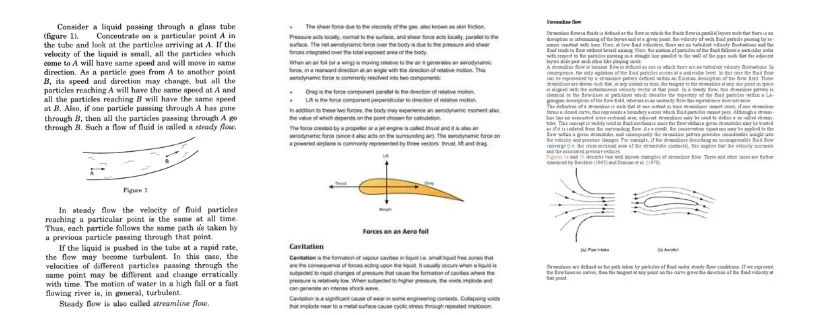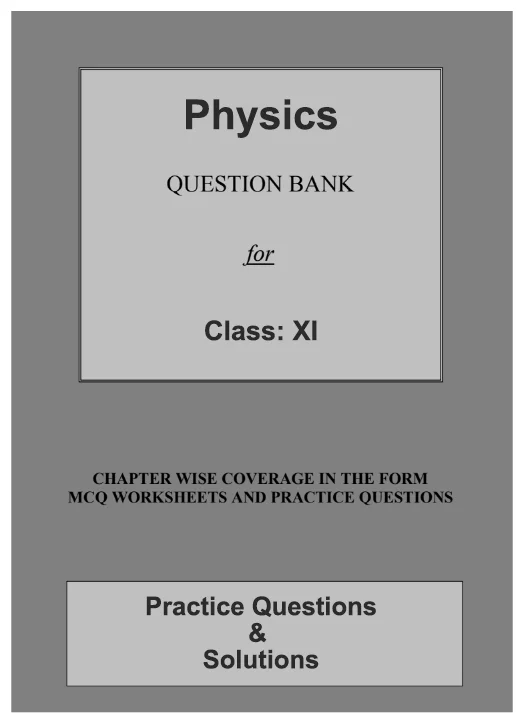In fluid dynamics, streamlined flow stands as a fundamental concept, offering insights into the behavior of fluids in motion. Defined by the smooth and orderly movement of particles along predictable paths, streamlined flow unveils the elegant simplicity underlying complex fluid behavior. It occurs when a fluid flows in parallel layers, with no disruption between them, epitomizing fluidic harmony. Understanding streamlined flow not only aids in engineering design and fluid transport but also unlocks the beauty of nature's fluid dynamics, from the gentle flow of a stream to the majestic currents of the ocean.
Exploring Streamline Flow in Fluid Dynamics
What is Streamline Flow?
Streamline flow is crucial in various fields, including engineering, physics, and environmental science. It plays a significant role in fluid transport processes, such as the flow of water through pipes, air over aircraft wings, and blood through blood vessels. Understanding streamlined flow enables engineers to design efficient systems for fluid transportation and optimize the performance of various devices and processes.
Example of Streamline Flow:
An example of streamlined flow can be observed in the laminar flow of water through a straight and smooth pipe. When water flows steadily through such a pipe at a relatively low velocity, it exhibits streamlined flow characteristics. In this scenario, the water molecules move in parallel layers, with each layer sliding smoothly past the adjacent layer without any disruption or mixing.
Streamline Flow Equation (Equation of Continuity)
The equation governing streamline flow is often referred to as the equation of continuity, which is based on the principle of mass conservation. It states that for an incompressible fluid (i.e., a fluid with constant density), the mass flow rate remains constant along a streamline. Mathematically, the equation of continuity is expressed as:
1⋅1=2⋅2A1⋅v1=A2⋅v2
where:
- 1A1 and 2A2 are the cross-sectional areas of the pipe or channel at two different points along the streamline,
- 1v1 and 2v2 are the fluid velocities at those points.
This equation implies that as the cross-sectional area of the pipe or channel changes, the fluid velocity adjusts accordingly to ensure that the product of area and velocity remains constant along the streamline. This principle illustrates the conservation of mass in a steady flow regime, such as a streamlined flow.
The equation of continuity is fundamental in fluid dynamics and is used extensively in various engineering applications to analyze and design fluid flow systems, such as pipelines, channels, and ducts.
Properties of Streamline Flow:
Streamline flow, also known as laminar flow, possesses several distinct properties that differentiate it from turbulent flow. Understanding these properties is crucial for various engineering and scientific applications. Here are some key properties of streamline flow:
1. Ordered Movement: In streamlined flow, fluid particles move in parallel layers along well-defined paths called streamlines. These streamlines remain distinct and do not intersect, illustrating the ordered movement of the fluid.
2. Smooth Flow Profile: The velocity profile of streamline flow is smooth and uniform across the cross-section of the flow. This means that the velocity of the fluid remains constant at any given point along a streamline.
3. Low Reynolds Number: Streamline flow typically occurs at low Reynolds numbers, where the inertial forces are much smaller than the viscous forces. This results in stable and predictable fluid motion with minimal turbulence.
4. Minimal Mixing: Unlike turbulent flow, which involves chaotic mixing and eddy formation, streamline flow exhibits minimal mixing between adjacent fluid layers. This property makes streamline flow ideal for applications where precise control of fluid behavior is required.
5. Conservation of Mass: The principle of mass conservation, described by the equation of continuity, governs streamline flow. This principle states that the mass flow rate remains constant along a streamline, ensuring the conservation of mass within the flow.
6. Highly Predictable: Streamline flow is highly predictable, allowing for accurate analysis and modeling of fluid behavior in engineering and scientific applications. This predictability is advantageous for designing efficient fluid transport systems and optimizing performance.
7. Low Energy Dissipation: Compared to turbulent flow, which experiences significant energy dissipation due to viscous effects, streamline flow typically involves lower energy losses. This property is beneficial for minimizing energy consumption in fluid transport systems.
Difference between Streamline Flow and Turbulent Flow:
Streamline flow and turbulent flow represent two distinct regimes of fluid motion, each characterized by different behaviors and properties. Here are the key differences between streamline flow and turbulent flow:
1. Fluid Motion:
Streamline Flow: In streamline flow, fluid particles move in parallel layers along predictable paths called streamlines. The flow is orderly, with minimal mixing between adjacent layers.
Turbulent Flow: Turbulent flow involves chaotic and unpredictable fluid motion characterized by irregular fluctuations in velocity and pressure. Eddies swirls, and vortices form within the flow, leading to the mixing and dispersion of fluid particles.
2. Velocity Profile:
Streamline Flow: The velocity profile in streamline flow is smooth and uniform across the cross-section of the flow. The velocity remains constant at any given point along a streamline.
Turbulent Flow: In turbulent flow, the velocity profile is highly variable and non-uniform. Velocity fluctuations occur at various scales, leading to significant variations in velocity across the flow.
3. Energy Dissipation:
Streamline Flow: Streamline flow typically involves lower energy dissipation compared to turbulent flow. Energy losses due to viscosity are minimal, resulting in efficient fluid transport.
Turbulent Flow: Turbulent flow experiences significant energy dissipation due to viscous effects. The formation and dissipation of eddies and vortices consume kinetic energy, leading to higher energy losses.
4. Reynolds Number:
Streamline Flow: Streamline flow typically occurs at low Reynolds numbers, where viscous forces dominate over inertial forces. It is prevalent in situations with low fluid velocity and smooth flow conditions.
Turbulent Flow: Turbulent flow occurs at high Reynolds numbers, where inertial forces dominate over viscous forces. It is common in situations with high fluid velocity, complex geometries, or flow disturbances.
5. Mixing and Dispersion:
Streamline Flow: Streamline flow involves minimal mixing and dispersion of fluid particles between adjacent layers. Fluid parcels maintain their identity and move along predictable paths.
Turbulent Flow: Turbulent flow is characterized by extensive mixing and dispersion of fluid particles. Eddies and vortices transport fluid across different regions of the flow, leading to enhanced mixing and dispersion.
6. Applications:
Streamline Flow: Streamline flow is suitable for applications where precise control of fluid behavior is required, such as in hydraulic systems, boundary layers, and laminar flow reactors.
Turbulent Flow: Turbulent flow is encountered in various natural and engineering systems, including rivers, airflows over surfaces, industrial mixing processes, and combustion chambers.
Understanding the differences between streamline flow and turbulent flow is essential for analyzing fluid dynamics phenomena, designing fluid systems, and optimizing performance in various engineering and scientific applications.

CBSE Class 11th Downloadable Resources:
| 1. CBSE Class 11th Topic Wise Summary | View Page / Download |
| 2. CBSE Class 11th NCERT Books | View Page / Download |
| 3. CBSE Class 11th NCERT Solutions | View Page / Download |
| 4. CBSE Class 11th Exemplar | View Page / Download |
| 5. CBSE Class 11th Previous Year Papers | View Page / Download |
| 6. CBSE Class 11th Sample Papers | View Page / Download |
| 7. CBSE Class 11th Question Bank | View Page / Download |
| 8. CBSE Class 11th Topic Wise Revision Notes | View Page / Download |
| 9. CBSE Class 11th Last Minutes Preparation Resources | View Page / Download |
| 10. CBSE Class 11th Best Reference Books | View Page / Download |
| 11. CBSE Class 11th Formula Booklet | View Page / Download |
Being in CBSE class 11th and considering the board examinations, you need resources to excel. At TestprepKart we take great pride in providing CBSE class 11th all study resources in downloadable form for you to keep you going.
Below is the list of all CBSE class 11th Downloads available on TestprepKart for both Indian and NRI students preparing for CBSE class 11th in UAE, Oman, Qatar, Kuwait & Bahrain.
SAMPLE PRACTICE QUESTIONS OF SIGNIFICANT FIGURES :
Q1. What is streamline flow?
Answer: Streamline flow, also known as laminar flow, is a type of fluid motion characterized by the smooth and orderly movement of fluid particles along predictable paths called streamlines.
Q2. How does streamline flow differ from turbulent flow?
Answer: Streamline flow involves fluid motion in parallel layers with minimal mixing between adjacent layers, while turbulent flow is characterized by chaotic and unpredictable fluid motion with significant mixing and eddy formation.
Q3. What are the key properties of streamline flow?
Answer: Some key properties of streamline flow include ordered movement of fluid particles, smooth velocity profile, minimal mixing, low energy dissipation, and high predictability.
Q4. What factors influence the occurrence of streamline flow?
Answer: Streamline flow typically occurs at low Reynolds numbers, where viscous forces dominate over inertial forces. It is favored in situations with low fluid velocity, smooth flow conditions, and stable flow regimes.
Q5. Where is streamline flow commonly observed?
Answer: Streamline flow can be observed in various natural and engineered systems, such as smooth pipes, channels, boundary layers, laminar flow reactors, and certain physiological fluid flows like blood flow in capillaries.

| Class 11th CBSE Physics Chapters |
| Chapter1: UNITS AND MEASUREMENTS |
| Chapter2: MOTION IN A STRAIGHT LINE |
| Chapter3: MOTION IN A PLANE |
| Chapter4: LAWS OF MOTION |
| Chapter5: WORK, ENERGY AND POWER |
| Chapter6: SYSTEM OF PARTICLES AND ROTATIONAL MOTION |
| Chapter7: GRAVITATION |
| Chapter8: MECHANICAL PROPERTIES OF SOLIDS |
| Chapter9: MECHANICAL PROPERTIES OF FLUIDS |
| Chapter10: THERMAL PROPERTIES OF MATTER |
| Chapter12: KINETIC THEORY |
| Chapter13: OSCILLATIONS |
| Chapter14: WAVES |
| Class 11th CBSE Chemistry Chapters |
| Chapter1: SOME BASIC CONCEPTS OF CHEMISTRY |
| Chapter2: STRUCTURE OF ATOMS |
| Chapter3: CLASSIFICATION OF ELEMENTS AND PERIODICITY IN PROPERTIES |
| Chapter4: CHEMICAL BONDING AND MOLECULAR STRUCTURE |
| Chapter5: THERMODYNAMICS |
| Chapter6: EQUILIBRIUM |
| Chapter7: REDOX REACTIONS |
| Chapter8: ORGANIC CHEMISTRY – SOME BASIC PRINCIPLE AND TECHNIQUES |
| Chapter9: Hydrocarbons HYDROCARBONS |
| Class 11th CBSE Mathematics chapter |
| Chapter1: SETS |
| Chapter2: RELATIONS AND FUNCTIONS |
| Chapter3: TRIGONOMETRIC FUNCTIONS |
| Chapter4: COMPLEX NUMBER AND QUADRATIC EQUATIONS |
| Chapter5: LINEAR INEQUALITIES |
| Chapter6: PERMUTATIONS AND COMBINATIONS |
| Chapter7: BINOMIAL THEOREM |
| Chapter8: SEQUENCES AND SERIES |
| Chapter9: STRAIGHT LINES |
| Chapter10: CONIC SECTIONS |
| Chapter11: INTRODUCTION TO THREE-DIMENSIONAL GEOMETRY |
| Chapter12: LIMITS AND DERIVATIVES |
| Chapter13: STATISTICS |
| Chapter14: PROBABILITY |
| Class 8 Link soon |
| Class 9 Link soon |
| Class 10 Link soon |
| Class 12 Link soon |
Leave a Reply